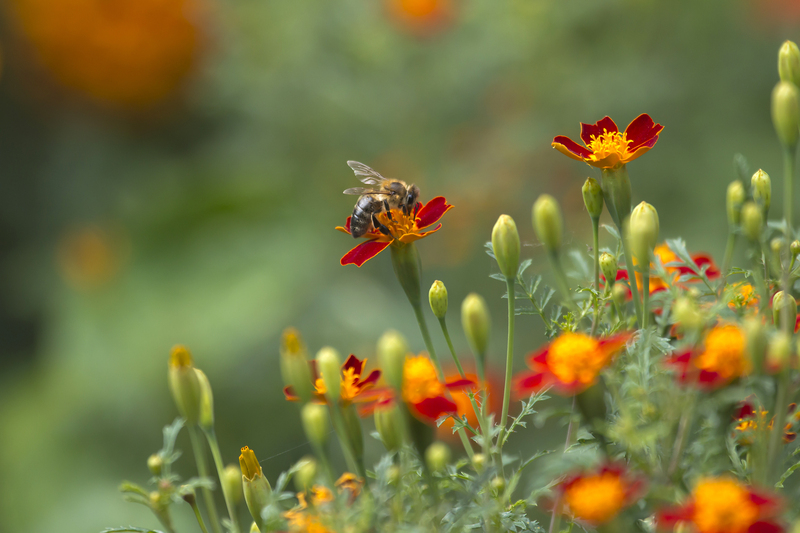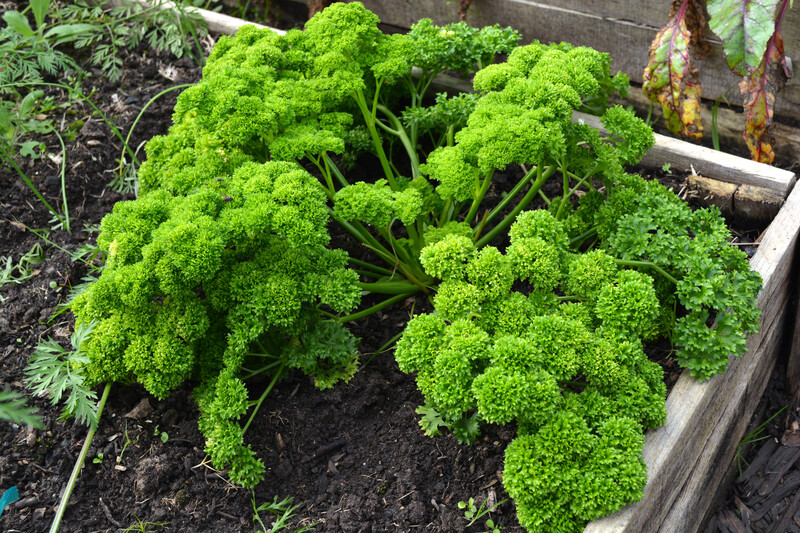Minimize Weeds with These 3 Practical Garden Tips
Posted on 10/06/2025
Minimize Weeds with These 3 Practical Garden Tips
An attractive and thriving garden is the pride of every passionate gardener, but weeds can quickly become a persistent nuisance, threatening both the aesthetics and health of your plants. Anyone interested in minimizing weeds in their garden should understand that a strategic approach is essential. Not only do weeds compete for sunlight, nutrients, and water, but they also harbor pests and diseases. If you're tired of battling unwanted plants, follow these three practical garden tips to reduce weeds and cultivate a lush, flourishing outdoor space.
Understanding the Impact of Weeds in Your Garden
Before delving into best practices for weed prevention, it's important to understand how severe the impact of unchecked weeds can be. Weeds are opportunistic: wherever there is exposed soil and available moisture, weed seeds will find a way to grow. They often outcompete vegetables, flowers, and shrubs, leading to stunted growth and lower yields. Many species of weeds also produce thousands of seeds per season, making their rapid spread a significant gardening challenge.
Why is minimizing garden weeds important?
- Soil nutrients: Weeds rob your plants of essential nutrients.
- Moisture competition: They absorb large amounts of water, leaving less for your preferred plants.
- Pest habitat: Thick patches of weeds are excellent hiding spots for garden pests.
- Disease spread: Some weeds carry diseases that can infect your garden crops.
- Aesthetic impact: Weedy beds look untended and detract from garden beauty.

3 Tested Garden Tips to Minimize Weeds
To achieve a clean, weed-free garden, you don't need harsh chemicals or daily battles with unwanted plants. Instead, follow these practical techniques to reduce weed growth and reclaim your gardening time and energy.
1. Apply Organic Mulch Strategically
One of the most effective, eco-friendly ways to limit weeds is to use a generous layer of organic mulch in your flower beds, borders, and vegetable plots. With mulching, you create a physical barrier that blocks sunlight from reaching weed seeds and seedlings, suppressing their ability to germinate.
- Choose natural mulching materials: Use shredded bark, wood chips, straw, grass clippings, or leaf mold.
- Apply a sufficient thickness: For best results, maintain a 2-4 inch layer over your soil. Too-thin layers won't adequately smother weed seeds.
- Replenish as needed: Organic mulch decomposes over time, enhancing soil structure and fertility, but it will need to be topped up throughout the season.
- Target trouble spots: Pay special attention to bare soil, pathways, and spaces between plants - these are prime locations for weed growth.
- Avoid piling mulch against stems: Keep a small gap around stems or trunks to prevent rot and disease.
Bonus Tip: Experiment with living mulches, such as low-growing ground covers, to create dense planting that crowds out weeds naturally. Reducing weeds in the garden starts the moment light is shut out from the soil surface.
2. Practice Timely and Efficient Hand Weeding
While it may seem old-fashioned, hand weeding remains an indispensable tool for any gardener intent on minimizing weed invasions. The key is timing and technique.
- Weed early and often: Young weeds are easy to remove, and getting them before they set seed prevents future weed explosions.
- Weed after rainfall: Moist soil makes it easier to extract roots fully, ensuring weeds don't regrow.
- Use the right tools: Hoes, hand forks, and dandelion pullers help you remove tough, deep-rooted weeds efficiently.
- Target the root system: Pull weeds firmly and avoid breaking roots, as many weed species can regrow from root fragments.
- Dispose properly: Don't compost weeds that have set seeds or have robust, spreading root systems; instead, discard them to avoid reinfestation.
If you dedicate 10-20 minutes a week to hand weeding, especially in spring and early summer, you'll significantly minimize weed pressure through the entire gardening season.
Pro Tip: Regular inspections of your garden during routine plant care or watering also help catch new weeds before they become overwhelming.
3. Embrace Dense Planting Layouts and Crop Rotation
Maximize your garden's potential to crowd out weeds naturally by rethinking your plant spacing and adopting crop rotation techniques. When garden beds are filled with healthy, vigorous plants, weeds have little room to establish themselves.
- Plant close together: Design beds with shorter recommended spacing to create a canopy that shades the soil surface and discourages weed germination.
- Interplant: Mix quick-growing annuals with slower species; use edible groundcovers like clover under taller vegetables.
- Rotate crops annually: Changing plant families each season breaks up weed and pest cycles, making it harder for weeds to become established where their preferred host isn't present.
- Utilize cover crops: In off-seasons, sow cover crops like rye, vetch, or buckwheat to smother weeds, return valuable nutrients, and improve soil quality.
- Fill gaps quickly: As soon as a crop is harvested, replant or mulch immediately to prevent weeds from moving into bare ground.
Dense planting combined with regular rotation makes it much harder for unwanted plants to compete. This sustainable approach not only serves as effective weed control but also supports biodiversity and soil health.
Additional Tips for a Weed-Free Garden Environment
- Edge your beds: Neatly defined beds with physical barriers--like bricks, stones, or metal edging--can halt the spread of creeping weeds from nearby lawns.
- Promptly remove weed flowers: If any weeds escape notice and start to flower, pluck them immediately before they go to seed.
- Use landscape fabric selectively: In high-traffic or difficult areas, a layer of landscape fabric under mulch provides an added line of defense against deep-rooted perennials.
- Keep compost weed-free: Avoid adding weed seeds or roots to your compost unless your pile gets hot enough to kill them.
- Water smartly: Drip irrigation and targeted watering keep moisture away from weed-prone open soil, favoring your chosen plants instead.
Common Myths About Weed Control - Busted!
- "Mulch alone will totally eliminate weeds." - While it's highly effective, even mulch can't stop aggressive perennial weeds or serve as a standalone solution.
- "Pull weeds only when they're big." - It's far easier to minimize garden weed growth by pulling weeds when they're small and before they set deep roots.
- "Weeds are harmless." - In reality, weeds can be carriers for diseases or insect pests, and their invasion can seriously reduce crop yields or harm ornamentals.
- "All weed killers are safe." - Many chemical controls pose risks to pollinators, soil life, and even gardeners. Physical methods and organic strategies should always be preferred.
The Seasonal Approach to Garden Weed Management
Spring
- Begin the season with a clean bed, removing any overwintered weeds and applying fresh mulch early.
- Monitor beds weekly as soil warms to catch the first flush of annual weeds.
- Start planting densely to get a head start over weeds.
Summer
- Replenish mulch if it has decomposed or become scattered.
- Check for late-emerging perennial weeds and remove them promptly.
- Fill any empty spots with fast-growing cover crops or additional veggies.
Fall and Winter
- Clear out spent crops quickly and cover empty ground with mulch or a cover crop.
- Do a thorough walk-through to pull any stragglers before they go dormant for winter.
- Prepare a weed management plan for early spring.

Frequently Asked Questions on Minimizing Weeds
How can I naturally prevent weeds in my vegetable garden?
Apply deep organic mulch, rotate your crops, and plant densely. These methods are chemical-free and safe for edible gardens, supporting sustainable weed management.
Is it better to pull weeds or use herbicides?
Manual removal, combined with mulching and crop rotation, is safer for you, your pets, and the environment. Herbicides should be a last resort and used sparingly after exploring non-chemical solutions.
Can landscaping fabric prevent all weeds?
Fabric barriers are helpful in certain situations but should be paired with mulch. Over time, soil and organic matter on top of the fabric can allow new weeds to sprout, so routine monitoring is still necessary.
How often do I need to mulch to minimize weeds?
Apply a fresh, thick layer of mulch at least once a year in spring or early summer, and check midseason for spots that need topping up.
Conclusion: Win the Battle Against Weeds with Smart, Sustainable Strategies
Maintaining a lush, weed-free garden doesn't require endless effort or chemical sprays. By adopting these three practical garden tips to keep weeds at bay--using organic mulch, efficient hand weeding, and maximizing dense plantings--you'll enjoy healthier plants, greater yields, and a more beautiful, sustainable garden. With just a little regular maintenance and thoughtful planning, minimizing weeds can become a natural part of your gardening routine, yielding success season after season.
Begin applying these strategies today, and experience the satisfaction of a thriving garden where your plants--not the weeds--take center stage.

